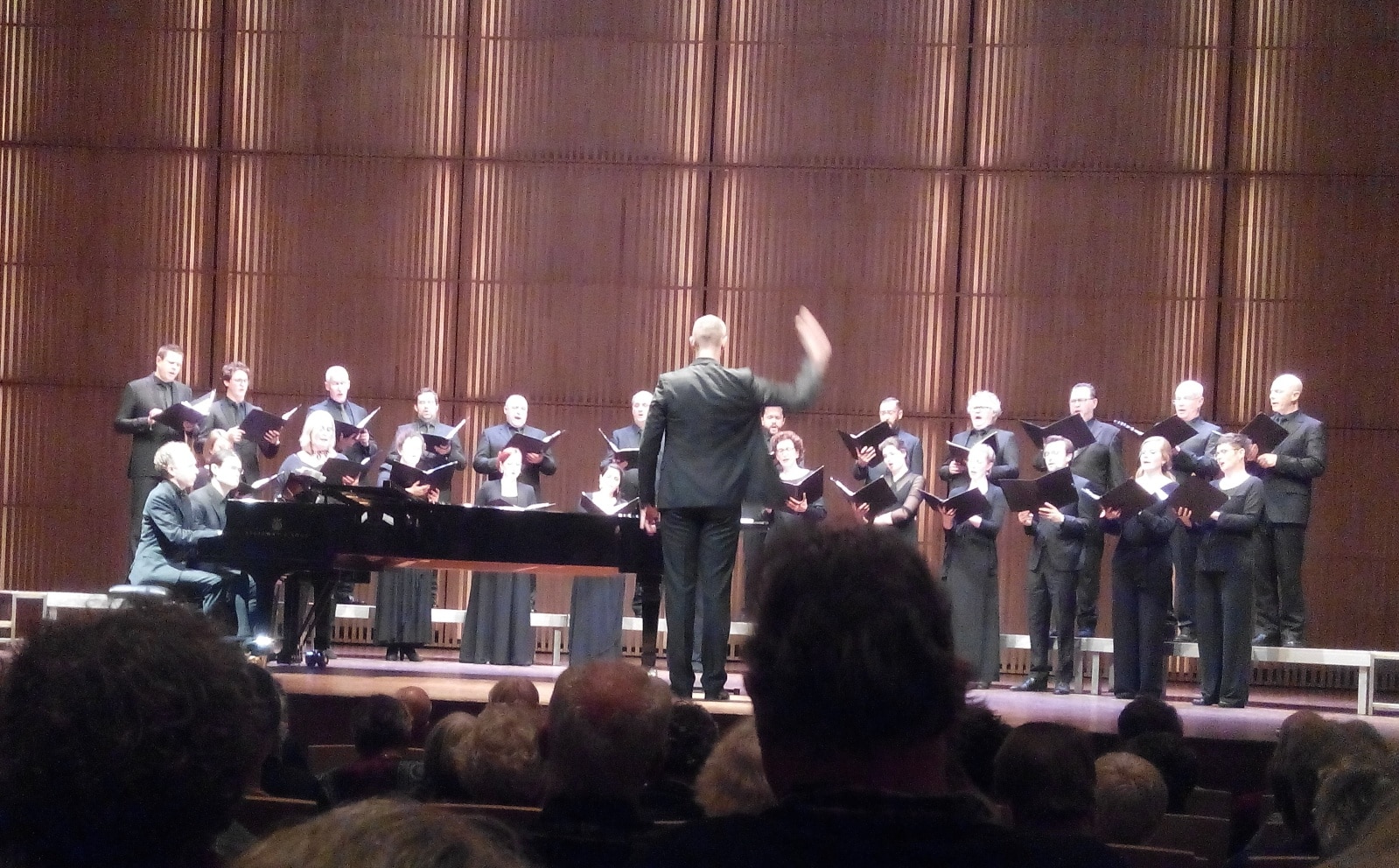Het Nederlands Kamerkoor presenteert woensdag 24 januari een avontuurlijk concert in Muziekgebouw aan ’t IJ als aftrap van een korte tournee. Op de lessenaars staan zelden gehoorde muziek van Lili Boulanger en Ton de Leeuw. Klapstuk is de beroemde Psalmensymfonie van Igor Stravinsky in een versie voor koor en piano vierhandig van Dmitri Sjostakovitsj. Ralph van Raat en Bobby Mitchell tekenen voor de pianopartij, chef-dirigent Peter Dijkstra leidt het geheel in goede banen.
Zonder Diaghilev geen Sacre du printemps
In 1929 stierf Serge Diaghilev, de Russische impresario die zoveel betekend had voor de acceptatie en de ontwikkeling van de Russische muziek. Hij introduceerde de opera Boris Godoenov in Europa en inspireerde Stravinsky tot spraakmakende composities voor zijn Ballets Russes. Zonder Diaghilev geen Vuurvogel, Petroesjka of Sacre du printemps.
Het belang van Diaghilev voor zijn eigen carrière ontging Stravinsky niet. Hij vereeuwigde de impresario in zijn Polka voor pianoduo en droeg zijn ballet Les noces aan hem op. Zijn dood kwam als een schok en Stravinsky beweende zijn weldoener in Venetië, waar hij was overleden.
Symfonieorkest maar dan anders
Toen de eveneens Russische dirigent Serge Koussevitzky hem kort daarna vroeg een symfonie te schrijven voor zijn Boston Symphony Orchestra, greep Stravinsky de opdracht met beide handen aan. Maar hij had zo zijn bedenkingen tegen de symfonische vorm. Die riep volgens hem te sterke associaties op met de muziek van de negentiende eeuw.
Voor hem stond onmiddellijk vast dat hij in zijn eerste symfonie (een jeugdwerk buiten beschouwing latend) het genre meteen een nieuwe richting zou geven. Hij zou de vermaledijde sonatevorm vervangen door het aan de barok gerelateerde contrapunt. Opdat ook de klank niet zou herinneren aan het romantische orkest, schrapte hij de hoge strijkers; alleen celli en contrabassen mochten blijven. Ook de klarinetten werd het zwijgen opgelegd, in hun plaats kwamen vijf fluiten en evenzoveel hobo’s.
Weg met sentiment
Nog opvallender is de toevoeging van een koor. Naar eigen zeggen liep Stravinsky al een tijdje rond met het idee voor een psalmensymfonie, ‘en daar liet ik me niet van afbrengen.’ Het verzoek van zijn uitgever om nu eindelijk eens iets ‘populairs’ te schrijven interpreteerde Stravinsky op eigenzinnige wijze. ‘Ik vatte dat niet op als “aangepast aan het begripsvermogen van het grote publiek”, maar als “iets dat algemeen geliefd is”.’
Hij vervolgt: ‘Het feit dat ik Psalm 150 koos, had ten dele te maken met de populariteit hiervan, maar een andere en even dwingende reden was mijn sterke behoefte om al die componisten die deze magistrale verzen misbruikt hadden als kapstok voor hun eigen lyrisch-sentimentele “gevoelens” eens flink de oren te wassen.’ Overigens liet Stravinsky de hoge koorstemmen liefst door knapen zingen om het vrouwelijke vibrato – een romantisch stijlmiddel bij uitstek – te vermijden.
Religieuze en muzikale vervoering
De Psalmensymfonie heeft drie delen, waarvan Stravinsky het eerste naar eigen zeggen componeerde in een staat van ‘religieuze en muzikale vervoering’. Het stuk is gebouwd op een opeenvolging van twee kleine tertsen verbonden door een grote terts. Hiermee verbeeldde Stravinsky een visioen van de profeet Elias die met paard en wagen ten hemel vaart.
Het eerste deel opent met ferme slagakkoorden, waarop het koor teksten scandeert uit Psalm 39, Exaudi orationem meam, Domine. Opvallend is de dubbelfuga in het tweede deel, Exspectans exspectavi Dominum. ‘Het is een omgekeerde piramide, die begint met een puur instrumentale fuga in het hoge register’ schreef Stravinsky. Hierop volgt een a cappella gezongen fuga op verzen uit Pslam 40 die ook het lage register omvat.
Het derde en laatste deel, Laudate Dominum, is een zetting van het ‘Alleluja’ uit Psalm 150. Hierin liet Stravinsky zich meer inspireren door de klank van de lettergrepen dan door hun betekenis. Dit leidt soms tot wonderlijke accenten, waarvoor hij de nodige kritiek te verduren kreeg. Geïrriteerd riposteerde hij: ‘Hebben zulke lieden dan geen enkele notie van de manier waarop de vroege polyfonisten hun woorden in mootjes hakten?’
Want een Stravinsky maakt zelf wel uit hoe hij componeert.
meer info en kaarten hier.
PS 25-1-2018. Het concert was zeer geslaagd. Bijzonder was dat 2 stukken van Ton de Leeuw tussen de Psalmensymfonie geplaatst waren.

